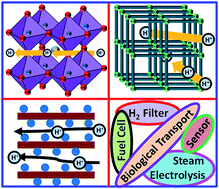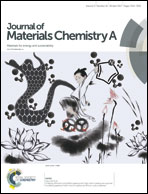Proton conductors produced by chemical modifications of carbon allotropes, perovskites and metal organic frameworks
Abstract
Proton conductors are distinct from electronic conductors by virtue of their low conductivity values and the necessity for the presence of a third material as a carrier to transport protons. Proton conductors have applications in fuel cells, hydrogen separating phases, steam electrolysis, sensors and biological transport systems. Though naturally occurring proton conductors show very poor conductance, designing superionic conductors is possible nowadays due to the improvements in porosity and interlayer oriented proton conduction tracks, alignment of particle conduction sites, hydration dynamics, water uptake capacity and stability. Insight into all the possible ways for improving the proton conductivity values of materials needs to be considered for designing new types of superionic conductors. Based on this necessity, herein, we have reviewed the gradual trend in proton conductivities in ancient type perovskites and ceramics, metal organic frameworks and the most recently developed oxidized carbon allotropes. As the strategies for improving the conduction tracks and proton migration behaviours of these three classes are not the same, they are discussed in different sections, in light of their intrinsic properties, scope of modification and structures. By consideration of a detailed list of updated articles, reports associated with strategies for obtaining gradually increased proton conductivities, including the improvement of conduction tracks, assembly of particles and increase in water content, have been focused on for detailed discussion. Furthermore, an in-depth discussion on the function of proton conductors in energy applications and biological transport systems has been reviewed concisely.

- This article is part of the themed collection: Recent Review Articles


 Please wait while we load your content...
Please wait while we load your content...